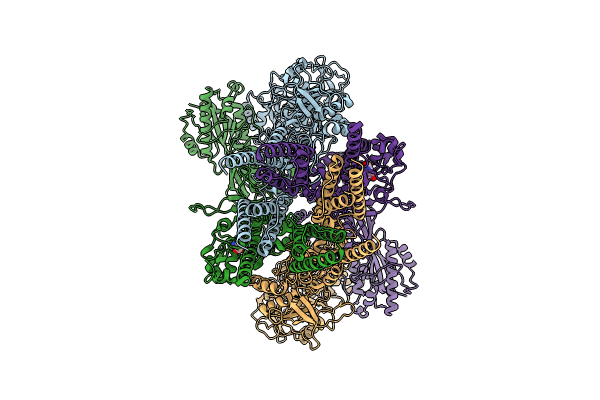
Deposition Date
2024-04-23
Release Date
2024-07-31
Last Version Date
2024-10-30
Entry Detail
PDB ID:
9BIB
Keywords:
Title:
Rat GluN1-GluN2B NMDA receptor channel in complex with glycine, glutamate, and EU-1622-A, in open-channel conformation, C1 symmetry
Biological Source:
Source Organism:
Rattus norvegicus (Taxon ID: 10116)
Host Organism:
Method Details:
Experimental Method:
Resolution:
3.81 Å
Aggregation State:
PARTICLE
Reconstruction Method:
SINGLE PARTICLE


